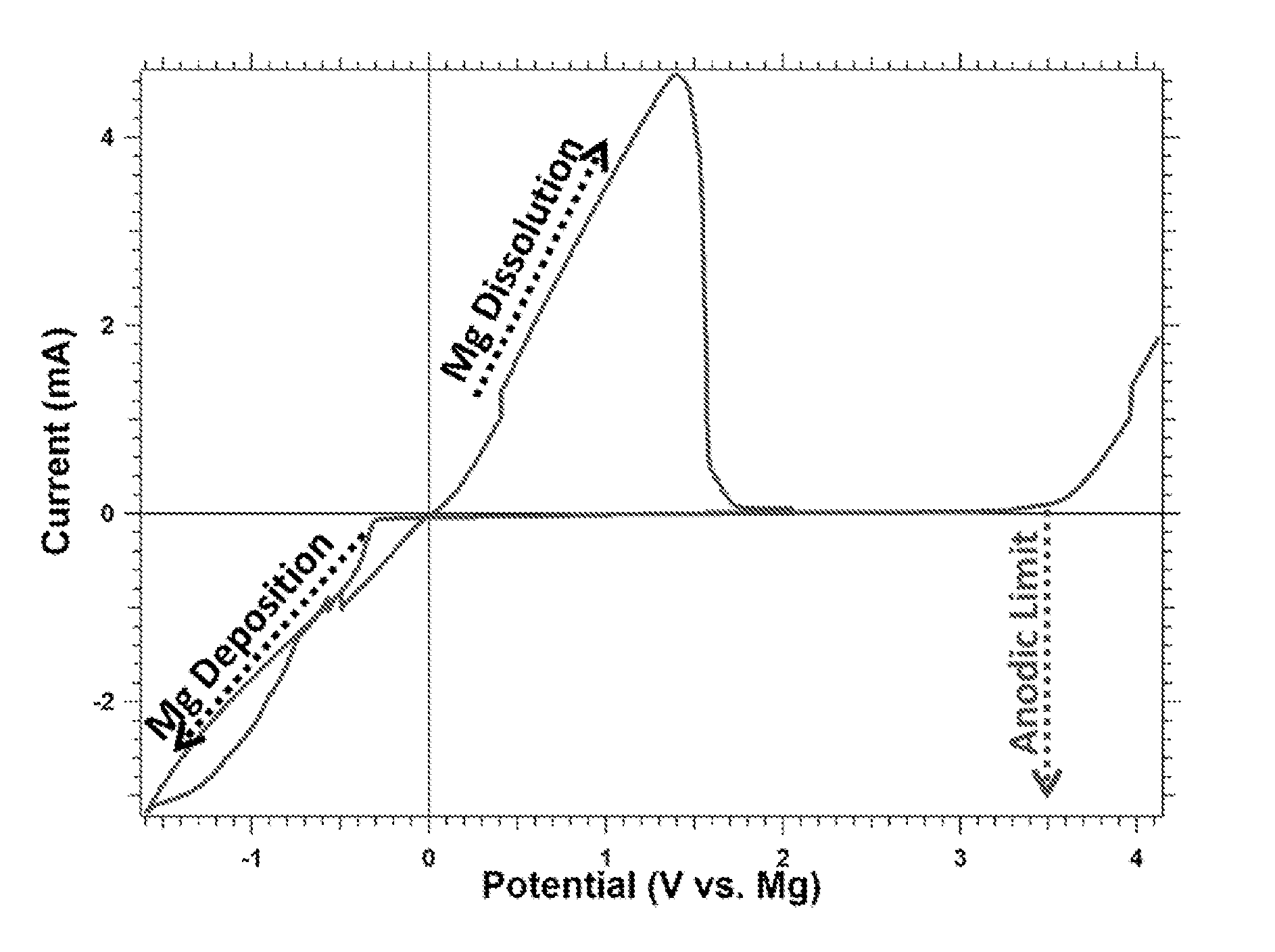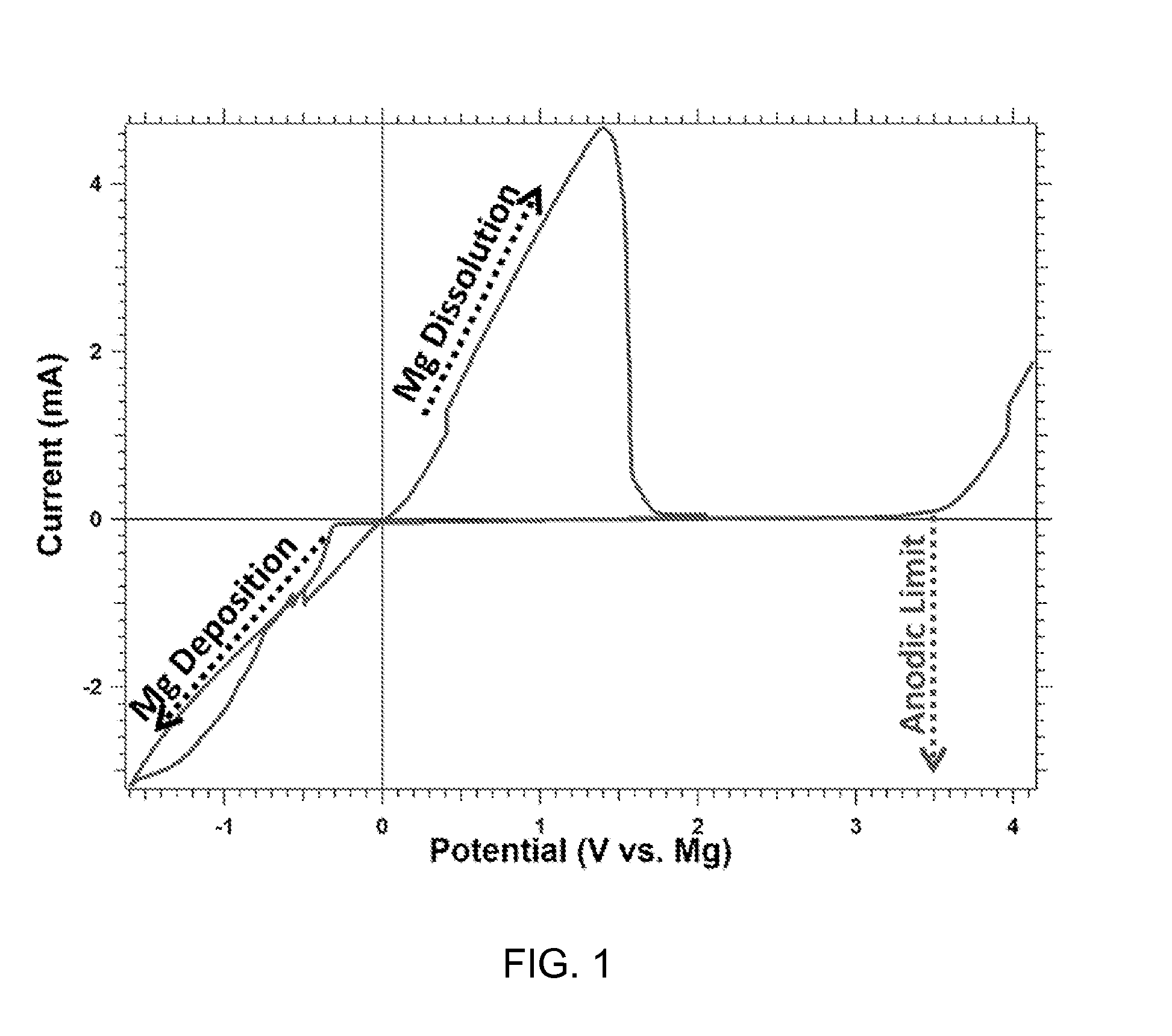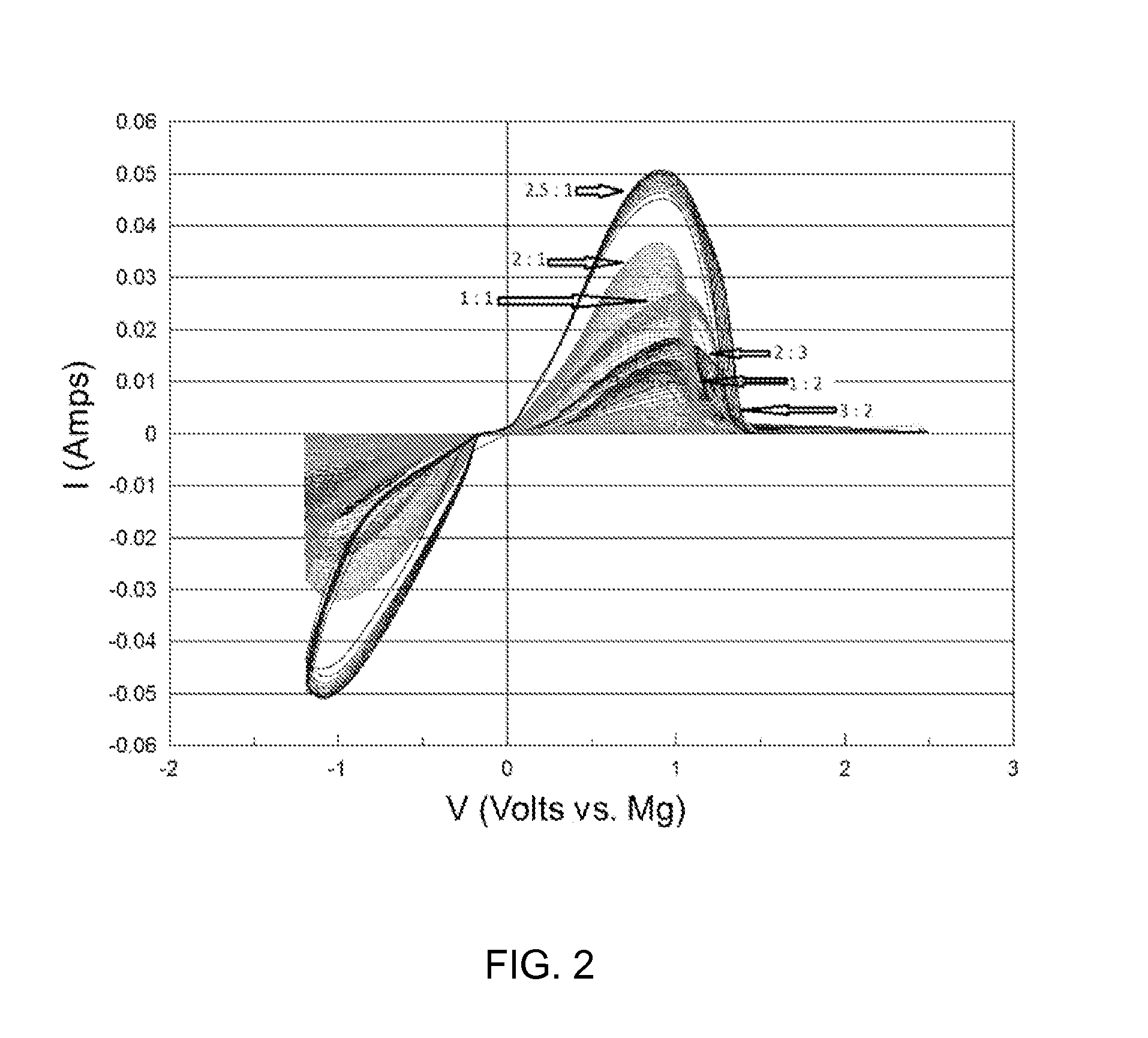High voltage rechargeable magnesium cells having a non-aqueous electrolyte
a rechargeable, magnesium-based technology, applied in the field of electrolysis solutions, can solve the problems of high reactiveness, high cost, and disadvantages of magnesium-based alkali metal anodes, and achieve the effects of high conductivity, high coulombic efficiency, and promotion of electrochemical deposition and dissolution of mg
- Summary
- Abstract
- Description
- Claims
- Application Information
AI Technical Summary
Benefits of technology
Problems solved by technology
Method used
Image
Examples
example 1
[0044]FIG. 1 is a graph displaying a typical cyclic voltammogram of the Mg2Cl3-TFSI complex resulting from reaction of MgCl2 and Mg(TFSI)2. Solutions utilize a mixture of 1,2-dimethoxymethane (DME) and tetrahydrofuran (THF) as the solvent and Platinum as the working electrode while Magnesium serves as both the auxiliary and reference electrodes.
[0045]The data depicted in FIG. 1 shows the potentiodynamic behavior of Mg2Cl3-TFSI complex salt obtained with DME / THF solution from the reaction of 3MgCl2+Mg[N(CF3SO2)2]2. The experiment utilized a scan rate of 25 mV / s, a platinum working electrode, and Mg for the counter and reference electrodes. The anodic stability of the solution is about 3.5 V vs. the onset of Mg dissolution. This is significantly higher than previous electrolytic solutions capable of reversibly plating Mg. The peak displaying maximum current density at −1.3 V is attributed to the deposition of magnesium metal while the peak with maximum current density at about 1.8 V i...
example 2
[0046]FIG. 2 is a graph displaying a typical cyclic voltammograms of the inorganic magnesium salt complex resulting from reaction of MgCl2 and Mg(TFSI)2 when the mole ratio is varied between the two reactants. Solutions utilize 1,2-dimethoxymethane (DME) as the solvent. The experiment utilized a scan rate of 25 mV / s, a platinum working electrode, and Mg for the counter and reference electrodes. The mole ratio of MgCl2 to Mg(TFSI)2 ranges from 1:2 to 2.5:1 in this salt solution. A high degree of reversibility and Coulombic efficiency is present in each composition depicted in FIG. 2. Furthermore the Mg deposition and stripping occurs with low overpotential. Table II below demonstrates that solutions of mole ratio for MgCl2 to Mg(TFSI)2 ranging from 1:2 to 2.5:1 exhibit high solution conductivity; all samples being greater than 1 mS / cm at this molarity of magnesium and room temperature. Electrolyte solutions for secondary magnesium batteries, which are the product of magnesium halide ...
example 3
[0047]FIG. 3 is a graph displaying a typical macrocoulometry cycling data for the inorganic magnesium salt complex Mg3Cl4(TFSI) resulting from reaction of 2MgCl2 and 1Mg(TFSI)2 in a mixed solution of 1,2-dimethoxymethane (DME) and N,N-propyl-methyl-pyrrolidinium-bis(trifluoromethylsulfonyl)imide (P13-TFSI) ionic liquid. The two-electrode experiment utilized galvanostatic cycling at 1 mA / cm2 to deposit about 2 microns of Magnesium onto a platinum working electrode from an Mg counter electrode. Subsequently 20% of the Mg layer is stripped and re-electrodeposited for 50 cycles prior to stripping the remaining 80% of Mg. The Coulometric efficiency of this process mimics deep cycling in a commercial cell. In FIG. 3 the average Coulometric efficiency over 50 cycles is 98.92%. Furthermore the cycling occurs with low overpotential to Mg deposition and Mg stripping. The high Coulombic efficiency, high degree of reversibility, and low polarization depicted in FIG. 3 is typical for preferred e...
PUM
| Property | Measurement | Unit |
|---|---|---|
| anodic voltage | aaaaa | aaaaa |
| voltages | aaaaa | aaaaa |
| voltage | aaaaa | aaaaa |
Abstract
Description
Claims
Application Information
 Login to View More
Login to View More - R&D
- Intellectual Property
- Life Sciences
- Materials
- Tech Scout
- Unparalleled Data Quality
- Higher Quality Content
- 60% Fewer Hallucinations
Browse by: Latest US Patents, China's latest patents, Technical Efficacy Thesaurus, Application Domain, Technology Topic, Popular Technical Reports.
© 2025 PatSnap. All rights reserved.Legal|Privacy policy|Modern Slavery Act Transparency Statement|Sitemap|About US| Contact US: help@patsnap.com



